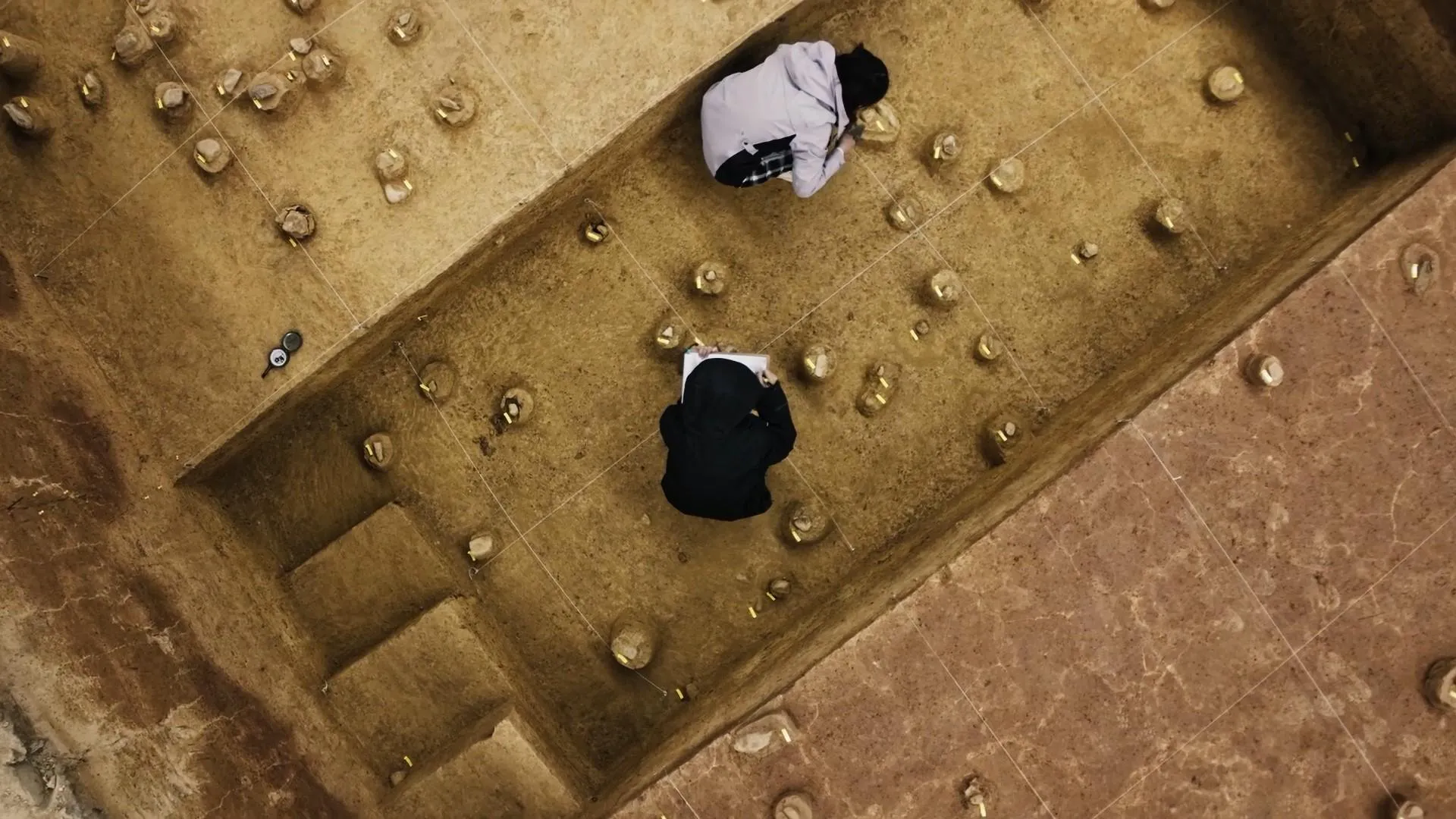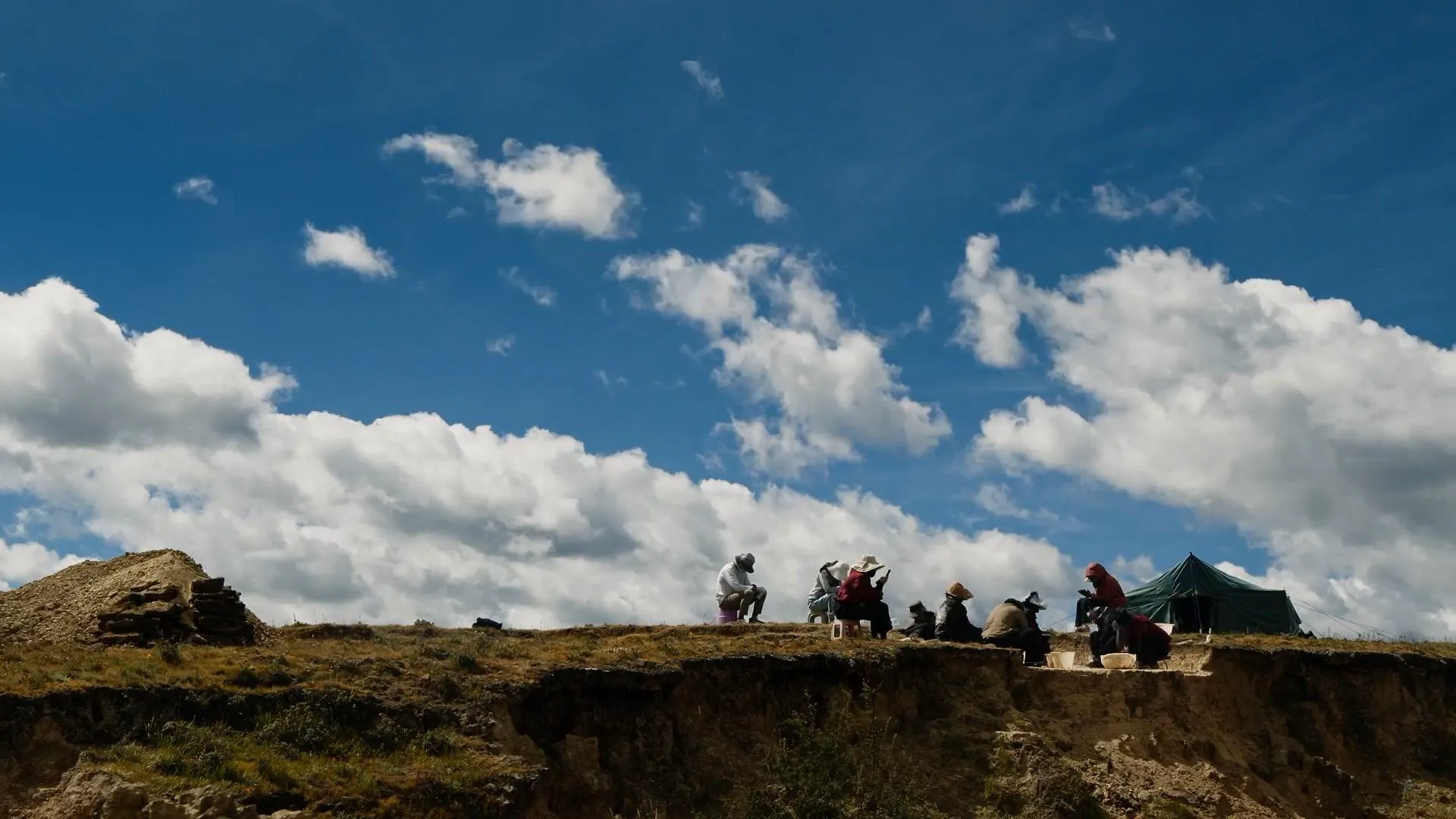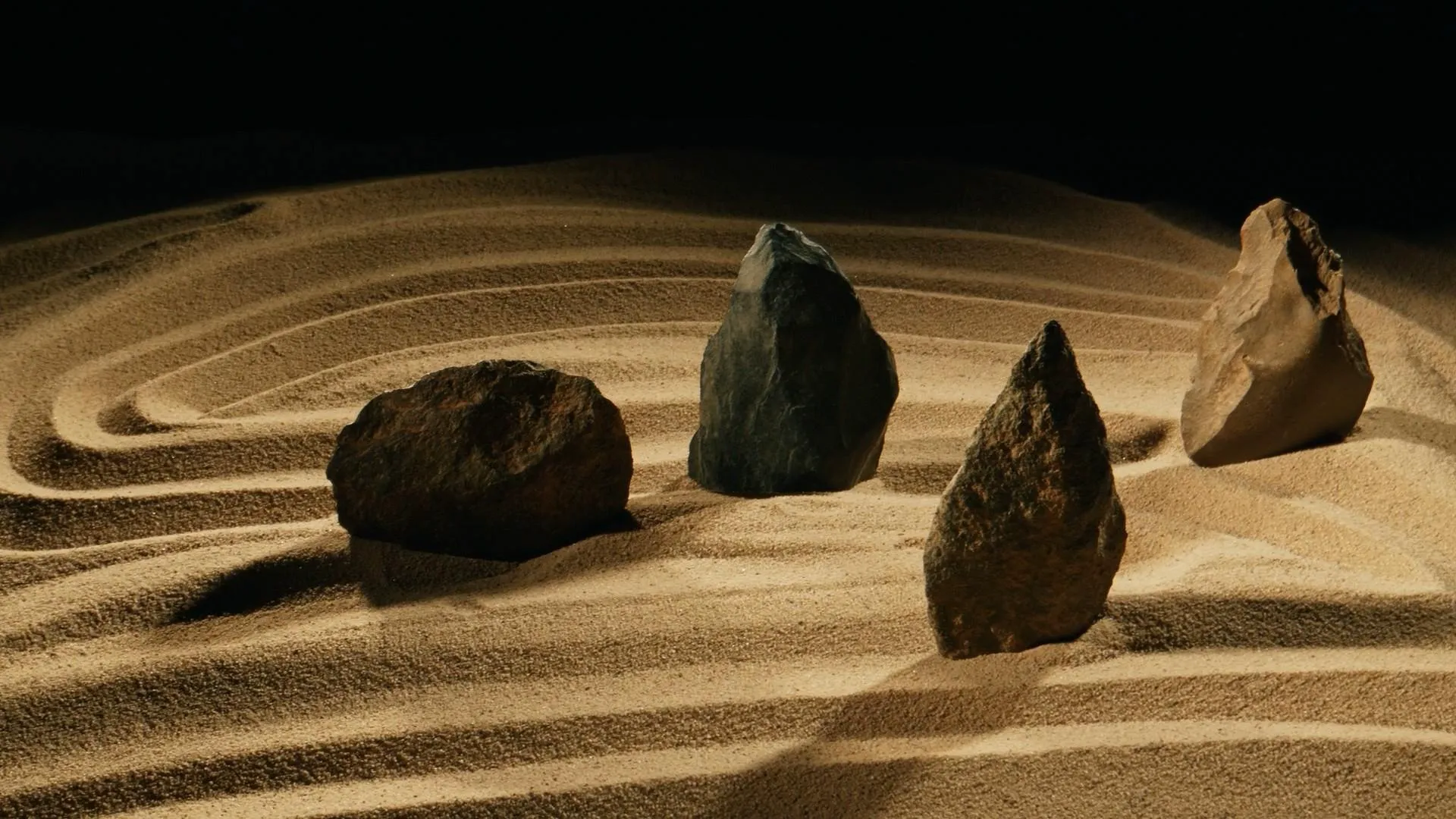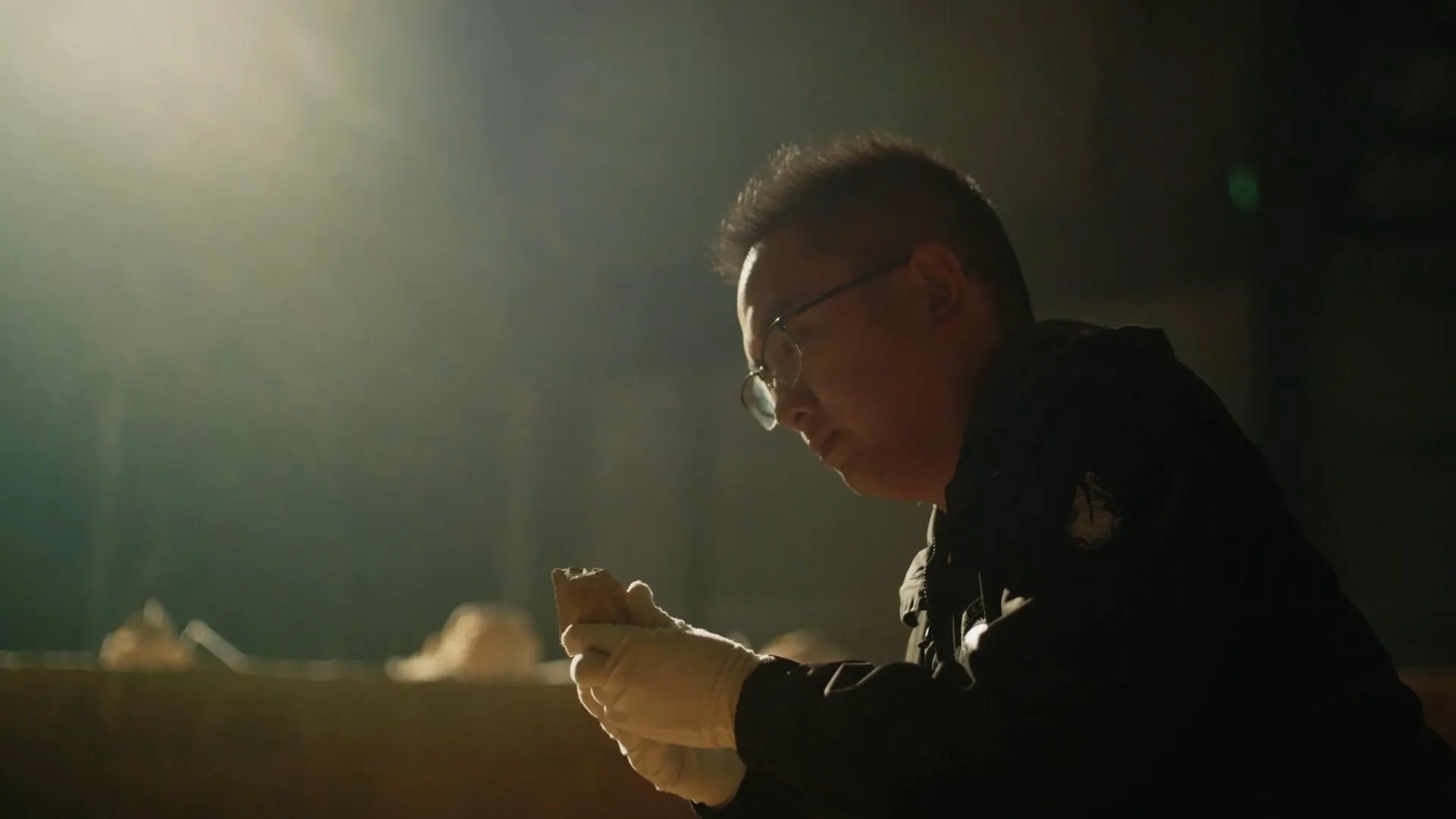In the heart of the Sichuan-Tibet Plateau, nestled among towering mountains, an ancient village that has slumbered for over two hundred thousand years is being awakened by the diligent efforts of archaeologists. Recently, the archaeological documentary “Witnessing Piro” premiered on CCTV Documentary Channel, Sichuan Satellite TV, and major online platforms. The film meticulously chronicles the discovery of the Piro site and the lives of early humans in the region. Through a blend of historical reenactments, animated sequences, on-site documentation, and expert interviews, the documentary employs a unique cinematic language to transport viewers to the vast landscapes of the Sichuan-Tibet Plateau. There, they can listen to echoes from the Paleolithic era and witness how ancient ancestors, with their wisdom and courage, wove a magnificent epic of survival and development through exchange, integration, and relentless effort.
Weaving Time: XR Recreations of Ancient Life
“Witnessing Piro” masterfully employs XR (Extended Reality) reenactments to depict the distant Paleolithic era. This approach is not merely an artistic interpretation of history but a visual extrapolation grounded in scientific evidence, creating an emotional bridge between cold archaeological remains and the vibrant lives of ancient people.
Bridging the Gap Between Evidence and Experience
Typically, the absence of written records means our understanding of early human life relies heavily on stone tools, animal fossils, and geological strata. While this scientific evidence is objective, it can often seem abstract and detached to the average viewer. Reenactments, through vivid dramatization, weave these fragmented pieces of information into compelling historical narratives, allowing viewers to “see” the daily lives, emotions, and struggles of early humans.
However, this type of recreation presents significant challenges. How can creators strike a balance between reasonable artistic license and strict scientific accuracy, avoiding subjective speculation when historical sources are so scarce? “Witnessing Piro” navigates this balance with precision.

Grounded in Archaeological Discovery
First and foremost, the film’s recreations of ancient scenes, such as hunting and gathering, hand axe production, and family life around the campfire, are not fabricated. They are based on archaeological findings from the Piro site. The discovery of the Acheulean hand axe, a signature tool, serves as the central evidence for recreating scenes of early humans making and using tools. The documentary further speculates on how early humans selected stone materials, used percussion techniques to create stone tools, and utilized these tools for hunting, butchering animals, or processing plant tubers.
Furthermore, the environmental recreations strive for authenticity. From the plateau’s vegetation and climate to the types of habitats early humans might have chosen, every effort is made to align with archaeological and paleoenvironmental research. These detailed depictions imbue the visuals with a sense of historical texture, making viewers feel as though they have stepped back into that primordial era.
Injecting Humanity into History
Moreover, XR technology breathes life, emotion, and humanity into the silent ruins and stone tools. When the camera focuses on the rough yet expressive faces of “early humans,” showcasing their courage in cooperative hunting, their warmth in sharing food, and their resilience in facing natural challenges, viewers feel as though they have crossed hundreds of thousands of years to stand among these ancestors. We hear their laments in torrential rain, their cries of mourning over loved ones, their murmurs around the campfire, and their gasps during long journeys. We feel their joys and sorrows, deeply resonating with their emotional experiences.
“Witnessing Piro” avoids sensationalizing or overly dramatizing the lives of early humans. Instead, it approaches the historical record with respect for life itself and a curious, compassionate attitude toward humanity’s childhood. By returning to the historical context and presenting their existence, the film successfully transports viewers to that distant and unfamiliar era. It not only popularizes archaeological knowledge and deepens understanding of early human lifestyles but, more importantly, inspires awe for the course of civilization and profound reflection on our own existence and meaning.
Sifting Through Time: Exploration and Discovery in Archaeology
While “Witnessing Piro” traces the footsteps of early humans, it also turns its lens on the individuals dedicated to uncovering and interpreting those traces: the archaeologists. Through authentic documentation of their work, the film reveals the rigorous appeal of archaeology and the humanistic spirit of the researchers. These genuine and impactful images showcase the tireless fieldwork conducted at the Piro site.
The Rigors of the Field
The cameras capture archaeologists clad in heavy sun-protective clothing, wide-brimmed hats shielding them from the intense plateau sun, as they toil in the dust, carefully sifting through fragments of stone that hold centuries of history. The Piro site, situated in a frigid highland region, presents a harsh and unpredictable natural environment. During the day, the sun blazes, its ultraviolet rays piercing the thin atmosphere like daggers. At night, the cold seeps in, and the drastic temperature fluctuations are difficult to endure. The archaeologists face the whims of nature daily. Under clear skies, they are scorched by the intense plateau sun, drenched in sweat. Moments later, dark clouds gather, and torrential rain soaks them from head to toe. An even greater challenge comes from the thin air of the plateau. Each bend, each scoop, is a battle against the dizziness and shortness of breath caused by oxygen deprivation.

Connecting Past and Present
Despite these harsh conditions, they meticulously and tirelessly carry out each step of the process: measuring coordinates, clearing strata, collecting samples, and taking meticulous care to avoid any negligence. From the meters-thick layers of earth, they unearth one precious stone tool after another, accurately recording their position and stratigraphic relationships. Amidst the vastness of the universe and the flow of time, archaeologists salvage, rediscover, piece together, and interpret ancient fragments buried deep within the earth, ultimately making it possible to “see” history. This effort to connect the past and present is inherently filled with profound humanistic significance.
Embracing Uncertainty
Notably, “Witnessing Piro,” in its depiction of the archaeological excavation process, not only records the joy of success but also does not shy away from showing the twists and turns and confusions encountered during exploration. For example, when archaeologists initially discovered scattered stone tools on the surface, they could not be certain whether there were richer cultural deposits underground. As the excavation deepened, they also debated the use and age of certain unearthed artifacts. Through constant questioning and verification, the truth gradually emerged. These segments showcase the scholars’ rigorous logical reasoning, open academic perspectives, and the process of continuously deepening understanding based on evidence.
The Emotional Core of Discovery
In addition to showcasing the scientific nature of archaeological work, the film focuses on exploring the emotional power it contains. The camera captures the joy and excitement of the archaeologists when they discover important artifacts, and the scholars’ admiration and awe for the wisdom of the ancient ancestors when they explain their research results. These moments deeply resonate with the audience. Their love for this profession, their dedication, and their deep feelings for history transcend the profession itself, rising to a sense of mission to explore human civilization.
The archaeologists’ tireless efforts in the face of difficult conditions represent professional dedication and a breakthrough in their own limits, embodying the spirit of scientific exploration. The ancient ancestors’ wisdom and courage in responding to various survival challenges, adapting to the environment and reproducing through toolmaking and cooperative hunting, demonstrate the resilience and adaptability of humanity in the face of nature. These two forms of resilience echo across time and space, forming the core spirit and emotional tone of the documentary “Witnessing Piro,” making the film not only a transmitter of knowledge but also a promoter and inspirer of spirit and will, allowing the audience to understand archaeological discoveries while also feeling the power of perseverance.
Poetic Visions: Capturing Grandeur and Warmth Through the Lens
The visual language of “Witnessing Piro” is a crucial component of its artistic appeal. Through meticulous composition, skillful use of light and shadow, and expressive color schemes, the film not only showcases the magnificent scenery of the Sichuan-Tibet Plateau but also imbues the archaeological narrative and recreations of ancient scenes with poetry and warmth.
A Canvas of Time and Space
The film employs extensive aerial and time-lapse photography, using wide and panoramic shots to capture the geographical environment of the Piro site: majestic snow-capped mountains, vast grasslands, undulating valleys, and expansive starry skies. This grand perspective not only comprehensively showcases the magnificence of the Sichuan-Tibet Plateau but also visually creates a sense of vastness, grandeur, and timelessness. The camera slowly sweeps across the continuous mountain range, eventually focusing on the archaeological excavation area, as if pinpointing the coordinates of early human activity on the vast canvas of time. We see ancient hunters searching for homes by lakes and in forests, and we witness modern archaeologists examining stone tools and recording strata. Although separated by hundreds of thousands of years, they share the same blue sky and the same plateau, making us deeply aware that the relationship between humanity and nature is an eternal theme that spans across time.
Details That Speak Volumes
At the same time, close-up shots are used appropriately, whether it is the detailed presentation of the exquisite cutting edge of the Acheulean hand axe, the capture of the focused gaze of the archaeologists, or the subtle emotional expressions on the faces of the ancient humans in the recreated scenes. These shots greatly enhance the visual impact and emotional expression. These camera shots consistently serve the narrative rhythm and thematic expression, guiding the audience to feel the weight of history and the vibrancy of life between the macro and micro perspectives.
The Dance of Light and Shadow
The use of light and shadow is a powerful means for “Witnessing Piro” to create atmosphere and express emotions. The film’s capture of natural light is particularly outstanding: the first rays of morning sunlight sprinkle on the plateau meadows, draping the archaeological excavation site in a golden veil, symbolizing the beginning of hope and new discoveries. This is not only aesthetically pleasing but also gives this ancient land a sense of sacredness. White clouds drift across the blue sky, casting shadows on the grassland. The interplay of light and dark conveys the passage of time and resembles a symphony played by heaven and earth. In the twilight of dusk, the excavation site’s trenches resemble wounds on the earth, revealing the vicissitudes of history, while the distant snow-capped mountains gradually change from pale gold to deep blue, adding a touch of mystery to the ancient site.

A Palette of Emotions
Color also plays an important narrative and emotional function in “Witnessing Piro.” The skillful use of color conveys the emotional tone of the film, sometimes grand, sometimes warm, and sometimes thought-provoking. The color tones of the ancient recreated scenes tend toward warm yellowish-browns or primitive natural colors, emphasizing a rugged, simple vitality and a close connection to the land. The modern archaeological scenes maintain a sense of realism, with slightly cooler tones highlighting the objectivity and rationality of scientific research. However, the two are not separated but form a dialogue through clever transitions and harmonious color transitions. At the end of the fourth episode, the continuity of color, from the modern archaeologists gazing at the deep blue sky in the distance to the ancient ancestors looking up at the same sky, suggests the cross-temporal inheritance of human vitality, emotion, and curiosity.
The visual elements of “Witnessing Piro,” such as composition, light and shadow, and color, work in concert with auditory elements such as sound effects and background music to enhance the documentary’s humanistic qualities and artistic beauty, making the originally potentially dry scientific content highly watchable and engaging. Its visual style is grand yet delicate, with both awe for natural wonders and a cherishing of the traces of small lives. The audiovisual language is highly consistent with the film’s theme of exploring ancient civilizations and praising the wisdom of life, complementing each other and forming a wonderful visual poem.
Lyrical Narration: Guiding a Journey of the Soul
In “Witnessing Piro,” the carefully crafted narration not only serves the function of conveying information but also, with its literary and philosophical qualities, guides the audience on a journey of the soul that transcends time and space.
A Blend of Science and Poetry
The narration of “Witnessing Piro” incorporates highly literary descriptions and profound philosophical reflections based on the accurate presentation of archaeological discoveries and scientific inferences. The wording is elegant and full of tension, with far-reaching artistic conceptions. For example, when describing the ancient ancestors completing the Acheulean hand axe, the narration is: “Ancient humans raised the hand axe, like a star piercing the night sky. The seeds of civilization were thus buried, waiting to break ground years later.” The language is full of praise for the dawn of civilization and the ode to human wisdom. Such narration is not only about telling knowledge but also about chanting history, expressing empathy for the ancient ancestors and deep reflection on the progress of human civilization. It is like a short and meaningful prose poem that enhances the cultural taste of the documentary.
Dialogue Between Image and Word
Excellent documentary narration is not a simple illustration of the screen but forms a complementary, dialogue, and even sublimating relationship with the images. When the screen shows ancient ancestors looking at the sky, the narration says: “When our ancestors looked up at the stars, what were they looking at? The farther humans look into the depths of the universe, the older the world they discover. Where do we come from? This is not only the question that archaeologists in Piro ask of stone tools but also the exploration of the vast universe by astronomers. Here, people see the secrets of the sun, moon, and stars, and see the path of human civilization.” This kind of narration is like a wise guide, guiding the audience to think about the cultural meaning behind the screen and opening another dimension of thought.

A Voice That Resonates
The narration of “Witnessing Piro” achieves a balance between the rigor of scientific popularization and the literary beauty of language expression. When introducing archaeological knowledge and explaining scientific theories, the narration strives to be accurate and avoids using vague or exaggerated expressions that may cause misunderstandings, reflecting a rigorous and meticulous creative attitude. At the same time, it uses poetic rhetoric, vivid metaphors, and warm brushstrokes to integrate the scientific calmness and objectivity with humanistic warmth with its unique linguistic charm. The narrator’s calm and magnetic voice, combined with the rhythm and rhyme of the language itself, sometimes passionate, sometimes deep, and sometimes gentle, blends perfectly with the overall atmosphere of the film.
Not cheap sensationalism, but an artistic interpretation of grand themes such as life, time, and civilization, the moving words touch the softest parts of the audience’s hearts, thereby inspiring awe for history, empathy for the ancestors, respect for the dedication of archaeologists, and enhancing the romantic characteristics of the film, which plays a positive role in its dissemination effect, allowing more people to be willing to approach archaeology and understand the ancient home of mankind.
Echoes Across Time: A Dialogue Spanning Millennia
The documentary “Witnessing Piro” is undoubtedly a successful work. With its unique perspective and excellent production, it presents the human history that has been sealed for hundreds of thousands of years in the depths of the Sichuan-Tibet Plateau to the world in a way that is both moving and scientifically rigorous, and full of humanistic color. Through the vivid XR recreation of ancient life, the authentic record of the hardships and wisdom of contemporary archaeological work, supplemented by the magnificent and meticulous audio-visual language, and the wonderful narration that permeates the heart like a trickle, the film offers the audience a visual and intellectual feast about the wisdom of early humans surviving on the plateau and the spirit of modern archaeological exploration.
What is commendable is that this film transcends simple popularization of knowledge and places archaeological discoveries in a broad narrative of life. What it allows us to “see” is not only stone tools and strata but also the vibrant lives, resilient spirit, open mind, and the glimmer of civilization behind the cold remains. Piro archaeology is not only a scientific exploration of the past but also a philosophical meditation on the present and the future. In this documentary, we see how our ancestors ignited the fire of survival in the harsh natural environment with wisdom and courage, and we see how generations of archaeologists, with unyielding perseverance, dusted off the dust of history and pieced together the common memory of the nation and even mankind.
The story of the Piro site has been recorded in the long scroll of human history, and each of us is the author of continuing this scroll. From the ancient plateau ancestors to us today, from the magnificent plateau to the boundless starry sky, the pace of human exploration and progress has never stopped. When the end credits song sounds, the image of the archaeologists standing on the plateau appears again, gradually overlapping with the faint figure of the ancient hunter in the distance. In this joint performance of ancient and modern times, we hear the echoes of human civilization and are more determined to have the confidence to move towards the future, and continue to create a brilliant chapter belonging to our generation with unyielding perseverance, continuous enterprising courage, active innovative wisdom, and open and inclusive cultural integration. This is the most profound inspiration that “Witnessing Piro” brings to us: seeing the past is the only way to better move towards the future.